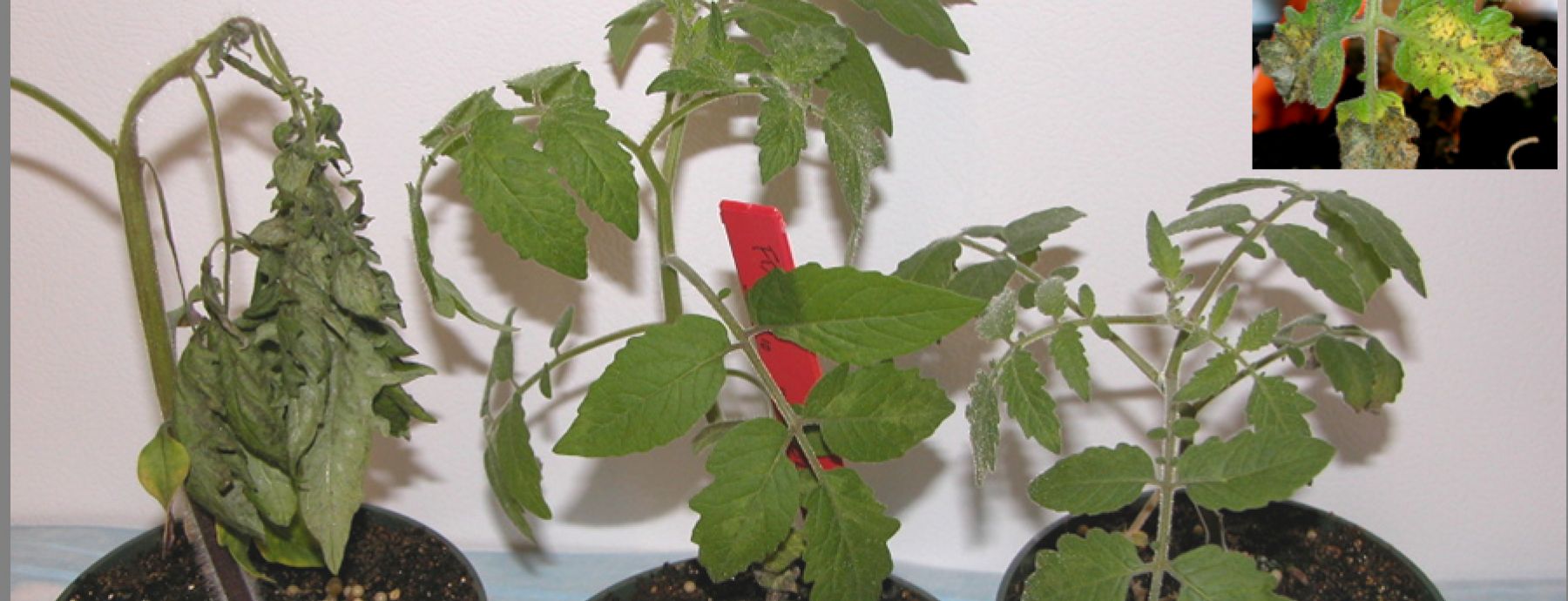Many crop plants are susceptible to viral infections, and the economic losses associated with viral outbreaks in agricultural systems can be enormous. Pathogen control options are often limited, and can be expensive or result in large amounts of pesticide use to stop disease outbreaks by killing transmitting insects. Therefore, there is a great need to better understand the genetic basis of plant resistance to pathogens and to integrate this knowledge into crop plant breeding and integrated control strategies. One promising avenue of research involves exploring wild crop relatives for resistance loci, and crossing those traits into cultivated varieties. A research team led by CIDD researcher Dr. Marilyn Roossinck and collaborators at the Samuel Robert Noble Foundation have identified a dominant trait conferring tolerance to the satellite RNA of Cucumber mosaic virus (CMV), an economically important pathogen of cultivated tomatoes, in an undomesticated tomato relative (Solanum habrochaitis). In tomato the satellite RNA, which requires the CMV helper virus causes a lethal necrosis, and the plants die in about 10 days after infection. In the wild plant, the CMV and satellite RNA are replicated efficiently, but do not cause the disease. When the wild tomato is crossed with cultivated tomato (Solanum lycopersicum), the F1 cross expresses the dominant virus tolerance trait. In the F1 cross and the wild relative, satellite RNA accumulates more slowly in the vasculature, and fewer vascular cells became infected, although overall titers are not changed. The location of two major quantitative trait loci conferring viral resistance were mapped to chromosomes 5 and 12. In addition to increasing our understanding of the complex molecular interactions underlying compatible and incompatible plant/pathogen interactions, this research is an important contribution to plant resistance breeding in cultivated varieties.
Synopsis written by Lori Shapiro.
Written By: Xu P, Wang H, Coker F, Ma JY, Tang Y, Taylor M, & Roossinck MJ
Paper Url: http://apsjournals.apsnet.org/doi/abs/10.1094/MPMI-01-12-0004?journalCode=mpmi
Journal: 25: 1034-1044
Journal Reference: 25: 1034-1044
Paper Id: http://dx.doi.org/10.1094/MPMI-01-12-0004
